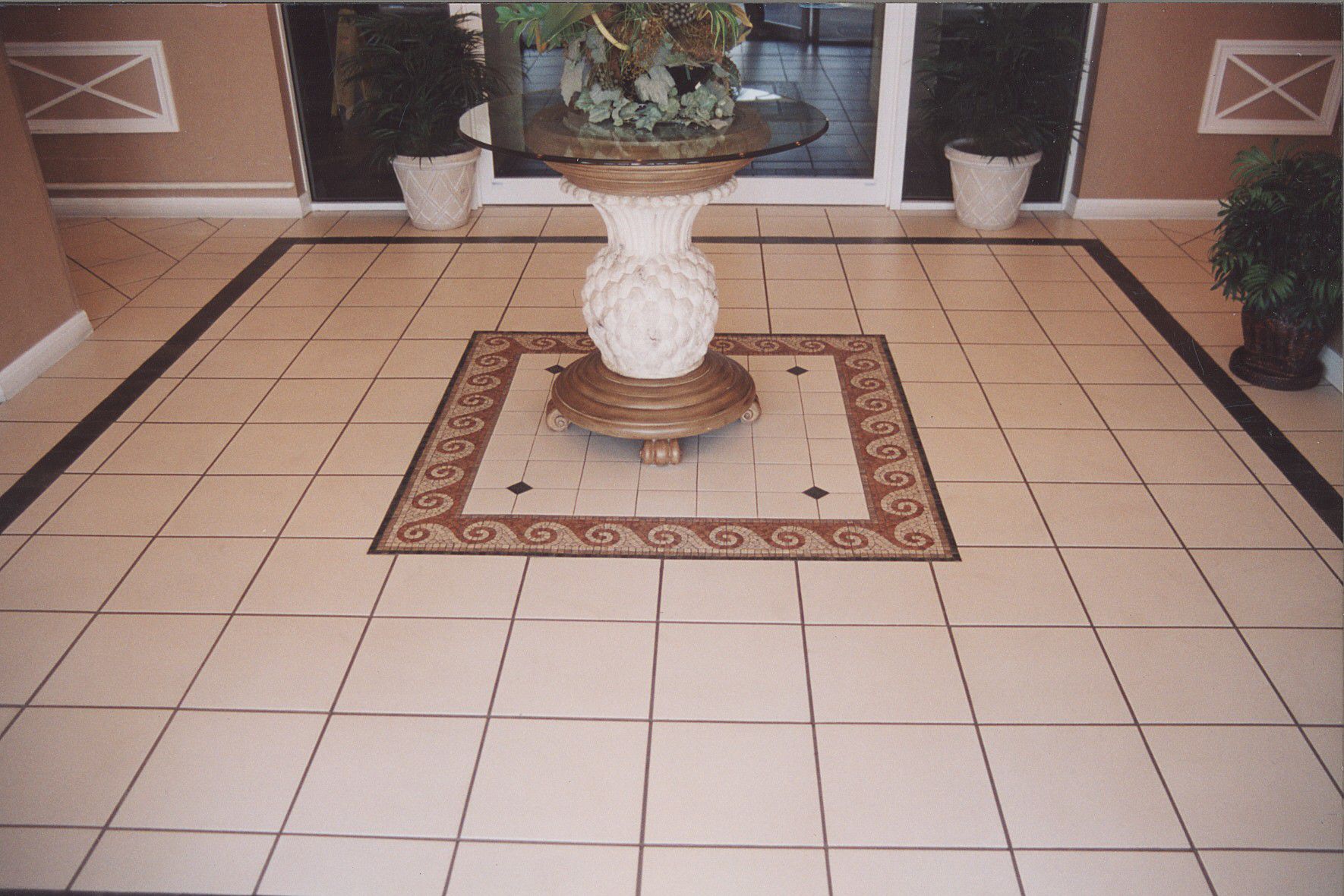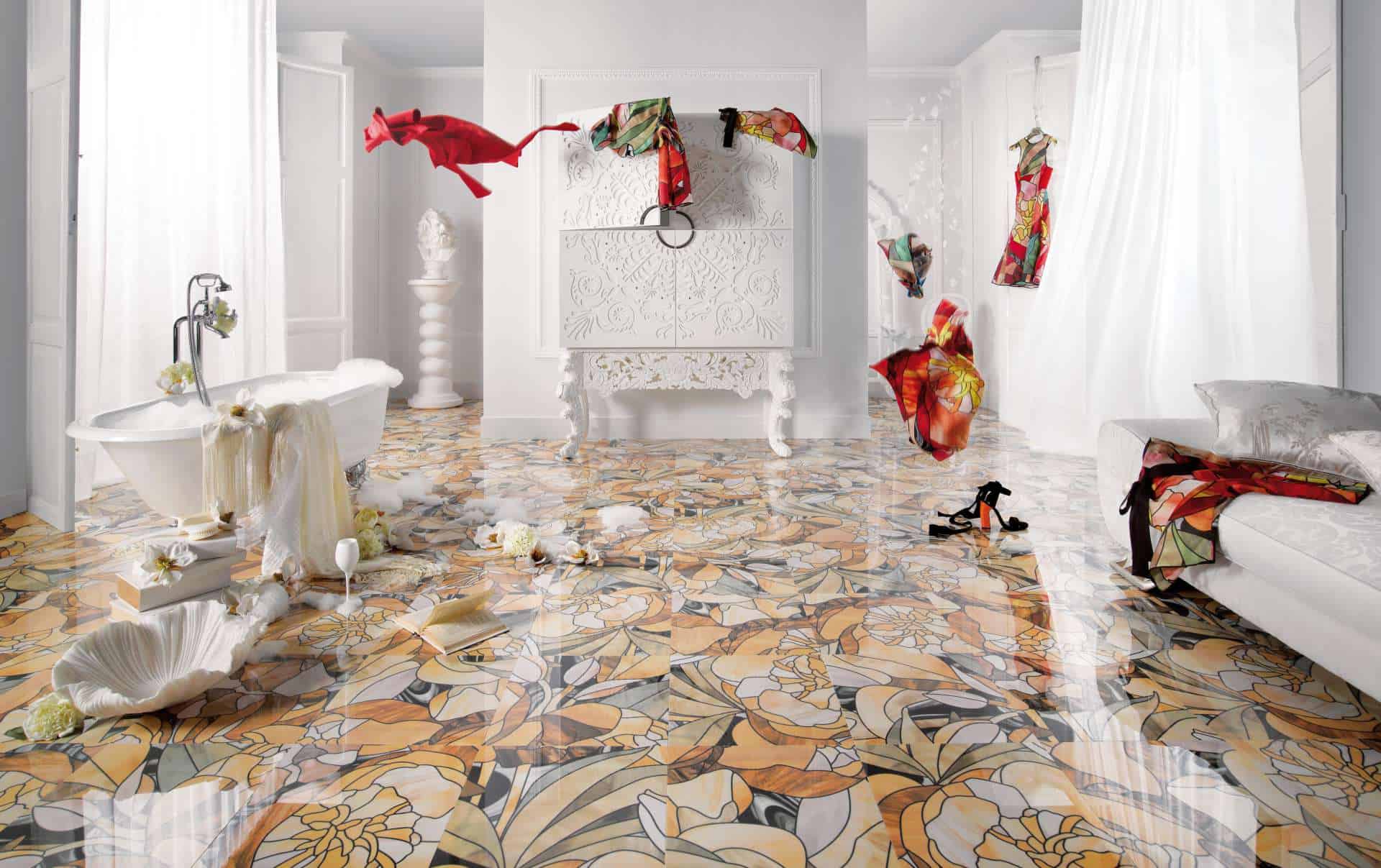Trending Bedroom Tile Styles

Modern bedroom tile designs are evolving, reflecting a desire for both functionality and aesthetic appeal. Trends lean towards larger formats, intricate patterns, and materials that create a sense of sophistication and tranquility. These elements contribute to a bedroom’s overall ambiance, making it a haven for relaxation and rejuvenation.
Large Format Tiles for a Spacious Feel
Large format tiles, measuring 12 inches or more on each side, are increasingly popular in modern bedroom designs. They offer several advantages that contribute to a spacious and minimalist aesthetic. The fewer grout lines created by larger tiles minimize visual interruptions, creating a sense of continuity and expansiveness. This is particularly beneficial in smaller bedrooms, where the illusion of space is crucial.
“Large format tiles can make a small bedroom feel larger by creating a sense of continuity and minimizing visual interruptions.”
Large tiles also simplify the installation process, reducing the time and labor required. This can translate to cost savings, making them a practical choice for budget-conscious homeowners. Furthermore, their sleek and modern appearance complements contemporary interior design styles, contributing to a sophisticated and minimalist feel.
Geometric Patterns and Intricate Designs
Geometric patterns and intricate designs are adding a touch of personality and visual interest to modern bedroom floors. These patterns can range from subtle and minimalist to bold and statement-making.
- Subtle Patterns: Subtle geometric patterns, such as herringbone or chevron, can create a sense of sophistication and understated elegance. They add a touch of visual interest without overpowering the overall design scheme.
- Bold Patterns: Bold geometric patterns, such as tessellations or mosaics, can be used to create a focal point in the bedroom. They can be used to define a specific area, such as the foot of the bed or a dressing area, or to add a pop of color and personality to the space.
The choice of pattern depends on the desired aesthetic and the overall design of the bedroom. A geometric pattern can complement a minimalist or contemporary design, while a more intricate design can add a touch of traditional or eclectic charm.
Natural Stone vs. Porcelain and Ceramic Tiles
Natural stone tiles, such as marble and slate, bring a unique elegance and timeless appeal to bedroom floors. Their natural variations in color and texture add a touch of organic beauty to the space.
- Marble: Known for its luxurious and sophisticated appearance, marble is a popular choice for bedroom floors. It comes in a variety of colors and patterns, from classic white to dramatic black. Marble is relatively porous and requires regular sealing to prevent staining.
- Slate: Slate is a durable and naturally textured stone that adds a rustic and earthy feel to the bedroom. It is available in a range of colors, from gray to brown to black. Slate is naturally slip-resistant, making it a good choice for bathrooms and other areas where water is present.
Porcelain and ceramic tiles offer a more affordable alternative to natural stone, with a wide range of styles and finishes available. They are also more durable and resistant to scratches and stains.
- Porcelain: Porcelain tiles are known for their durability and resistance to moisture and stains. They are also available in a variety of colors and finishes, including wood-look and stone-look tiles.
- Ceramic: Ceramic tiles are a more affordable option than porcelain tiles, but they are not as durable. They are still a good choice for bedrooms, especially in areas with low traffic.
The choice between natural stone and porcelain/ceramic tiles depends on personal preference, budget, and the desired aesthetic. Natural stone tiles offer a luxurious and timeless appeal, while porcelain and ceramic tiles provide a more affordable and durable option.
Color and Texture Considerations: Modern Bedroom Floor Tiles Design

Choosing the right tile colors and textures can significantly impact the overall feel and atmosphere of your bedroom. These elements play a crucial role in creating a space that reflects your personal style and promotes relaxation and comfort.
Selecting Tile Colors
The color of your bedroom tiles should complement the existing furniture, wall colors, and lighting. A well-coordinated color scheme creates a harmonious and visually appealing environment.
- Light and Neutral Colors: Light-colored tiles, such as white, cream, or beige, create a sense of spaciousness and brightness, making the bedroom feel larger and more airy. These colors are particularly suitable for smaller bedrooms or rooms with limited natural light.
- Bold and Vibrant Colors: If you prefer a more dramatic and energetic atmosphere, consider using bolder colors like blue, green, or red. These colors can add a touch of personality and create a focal point in the room. However, use them strategically to avoid overwhelming the space.
- Complementary Colors: To create a visually appealing and balanced design, consider using complementary colors. Complementary colors are opposite each other on the color wheel, such as blue and orange or red and green. These colors create a strong contrast and can make the room feel more dynamic.
- Analogous Colors: Analogous colors are located next to each other on the color wheel, such as blue, blue-green, and green. These colors create a sense of harmony and tranquility, making the bedroom feel more relaxing and inviting.
Exploring Tile Textures, Modern bedroom floor tiles design
Tile textures can significantly impact the feel and atmosphere of your bedroom. Smooth tiles create a sleek and modern look, while textured tiles add visual interest and depth.
- Smooth Tiles: Smooth tiles are easy to clean and maintain, making them a popular choice for bedrooms. They create a sleek and modern look and reflect light, making the room feel brighter.
- Textured Tiles: Textured tiles add visual interest and depth to a bedroom. They can create a more rustic or traditional feel, depending on the texture.
- Embossed Tiles: Embossed tiles have raised designs that create a three-dimensional effect. They add a touch of elegance and sophistication to a bedroom.
Creating Visual Interest with Contrasting Textures and Colors
To create a visually interesting and dynamic bedroom floor, consider incorporating contrasting textures and colors.
A simple yet effective approach is to use a combination of light and dark tiles to create a checkerboard pattern.
For instance, you could use light-colored smooth tiles for the main area of the bedroom and dark-colored textured tiles for the perimeter, creating a subtle yet impactful design. Alternatively, you could use different tile sizes to create a geometric pattern or incorporate decorative tile accents to add a touch of personality.
Practical Considerations and Installation

Your bedroom floor tiles should be more than just stylish; they should be practical and durable. You’ll be walking on them every day, so you want a surface that can withstand the wear and tear. Choosing the right tiles and installing them properly can make a huge difference in the longevity and overall look of your bedroom.
Tile Material Selection
The material of your tiles is crucial for their durability and ease of cleaning. Here’s a breakdown of two popular choices:
- Porcelain: Porcelain tiles are known for their strength, durability, and resistance to scratches, stains, and moisture. They’re a great choice for high-traffic areas like bedrooms because they can handle the constant foot traffic. Porcelain is also very low-maintenance, making it a good option for busy individuals.
- Ceramic: Ceramic tiles are a more budget-friendly option than porcelain. They’re still durable and easy to clean, but they might not be as scratch-resistant as porcelain. Ceramic tiles are available in a wide range of colors, styles, and finishes, making them a versatile choice for any bedroom design.
Tile Installation Process
Installing bedroom tiles requires a bit of planning and precision. Here’s a step-by-step guide:
- Preparation: Start by clearing the room and removing any existing flooring. Ensure the subfloor is level and smooth. You may need to add a leveling compound or plywood to achieve a smooth surface.
- Laying the Tile: Apply a thin layer of mortar to the subfloor, then lay your tiles. Use spacers to ensure consistent spacing between tiles.
- Grouting: Once the mortar has dried, apply grout to fill the spaces between tiles. Choose a grout color that complements your tile color and style.
- Sealing: Apply a sealant to the grout to protect it from stains and moisture. This will help keep your tiles looking their best for years to come.
Tile Installation Patterns
The pattern in which you install your tiles can significantly impact the overall look of your bedroom. Here are a few popular patterns:
- Herringbone: This classic pattern creates a visually appealing and elegant look. It’s perfect for adding a touch of sophistication to your bedroom.
- Basketweave: This pattern is a bit more intricate than herringbone, creating a unique and textured look. It’s a good choice for adding visual interest to your bedroom floor.
- Staggered: This is the most common tile installation pattern. It’s simple and easy to install, making it a good choice for DIY projects.
